| |
|
A Short Biography of a World Famous
Martial Artist |
|
Bruce Lee was foremost a Master of
'Gung-Fu' and a Grandmaster of his own system
Jeet Kune Do "Way of the Intercepting Fist"
Bruce Lee was born in the hour of the Dragon (Between 6
and 8 a.m), in the year of the Dragon, on November 27, 1940, at the
Jackson Street Hospital in San Francisco’s Chinatown. Lee’s full name is
written Lee Jun Fan. His stage name in China was Lee Shao Lung (Little
Dragon). Lee received the name "Bruce" from a nurse at his birthing
hospital, and his family never used the name during his pre-school
years. They preferred to call him by his nickname "Sai Fon" or "Little
Phoenix." It was a girl's name, deliberately chosen by his parents
because they believed that evil spirits did not like boys in the family
(their firstborn was a son who died in infancy). So, by giving Bruce a
girl's name, they believed they could fool the demons into sparing his
life!
Bruce Lee is reputed to have lost a fight only once in his life - when he
was 13 years old. This loss actually prompted Bruce to learn martial
arts from a Wing Chun master named Yip Man. After other students learned
that Bruce wasn't pure Chinese, they refused to let him train in their
class. Yip Man had to train him privately.
Bruce Lee called his Art "Gung-Fu". At the center of the Oriental arts of
self-defense, it is a philosophical Art that serves to promote health,
to cultivate the mind, and to provide a most efficient means of
self-protection. Its philosophy is based on the integral parts of the
philosophies of Taoism and Chinese Ch'an Buddhism (Japanese Zen) - the
ideal of being harmonious with and not against the force of the
opponent. Just as a butcher preserves his knife by cutting along the
bones, a Gung Fu man preserves himself by complementing the movements of
the opponent.
Lee was a child actor in Hong Kong, but to avoid gang fights prevalent
in Hong Kong and get his U.S. citizenship, Bruce Lee moved to the United
States in 1959 and began teaching Wing Chun at his newly opened Jun Fan
Gung Fu Institute. Perceiving weaknesses of traditional Kung Fu
training, Bruce Lee created his own martial way, called Jeet Kune Do. He
believed one’s movements and mind should flow like water, which is why
his school motto was “using no way as way; having no limitation as
limitation”. He taught many celebrities such as Steve McQueen, James
Coburn, Chuck Norris, James Garner, Kareem Abdul Jabbar, Danny Inosanto,
etc.
He starred in the TV series The Green Hornet as Kato, which character
displayed to the world something old but seldom seen, a fluid, soft,
traditional Gung-Fu combat style (1966-67). He later became a major box
office draw in Fists of Fury (1971), The Chinese Connection (1972), and
Enter the Dragon (1973), which was the first Hollywood produced, big
budget Kung Fu film and re-defined the modern martial arts/action film
genre.
Only 32, the martial arts star died in Hong Kong on July 20th, 1973. Lee
had suffered from seizures, including one just a month before his death,
but popular urban legends persist that Lee was murdered by Triads, of a
curse on his family, and/or he suffered the delayed reaction from a Dim
Mak strike (The Touch Of Death). To add to the folklore a mirror that
was placed on Bruce Lee’s house to ward off evil spirits was blown away
in a typhoon the day before his death.
Although proud of his Chinese heritage, Bruce Lee rejected the narrow
view that the martial arts belonged only to the Orient, and came into
conflict with those who did; he prevailed, and Gung Fu and other martial
arts have spread throughout the world. |
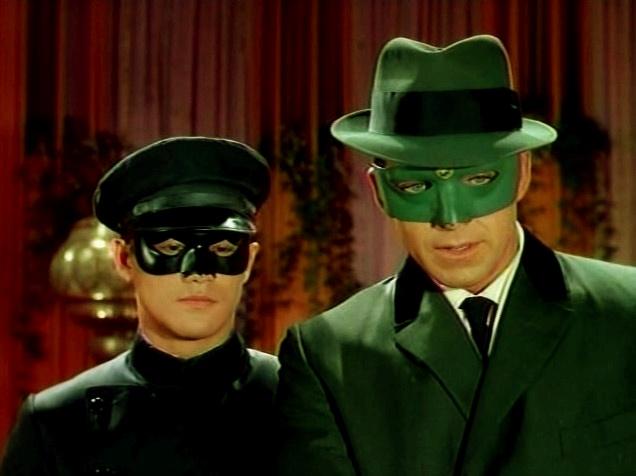 |
 |
|
The Green Dragon Society and the
Green Hornet |
| Bruce Lee had a tremendous influence inspiring many young people by
his example to take interest in martial arts. But back then not just any
martial art. Everyone wanted Gung-Fu! Everyone was talking about how
Kato fought like no one had ever seen before. And because the beginning of
Bruce Lee's
short career rise to fame (1966 to 1973) coincided with the early days
of the Green Dragon Society in Chicago (early 1960s), many of the first
generation of Green Dragons, young men 13 to 18 years of age, were
initially influenced into what eventually became a lifetime of study, by the television program called the
"Green Hornet" (1966-67) featuring Bruce Lee as "Kato". |
|
The Green Hornet Television Show
(1966/67) |
|
The Pinnacle of Green Hornet incarnations came
in 1966 with the arrival of The Green Hornet television series starring
Van Williams (Green Hornet) and Bruce Lee (Kato)
There was never before any Kato like Bruce Lee. Kato
showcased the talents of a young Bruce Lee to American audiences before
he became an international star. No doubt the reason why this series is
remembered today is because of
Bruce Lee's Kato.
The TV series of the 1960s, as was traditional with the Green Hornet,
played it straight, especially compared to the campy theatrics of the
Batman and Robin series at that time.
Billy May was brought in to do the musical score, and veteran horn
player
Al Hirt's solo on the theme remains one of the best-known TV show
tunes in the world. |
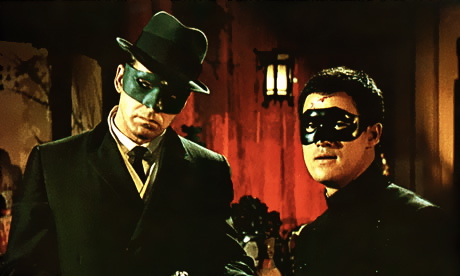
'Preying Mantis' Tong War Episode |
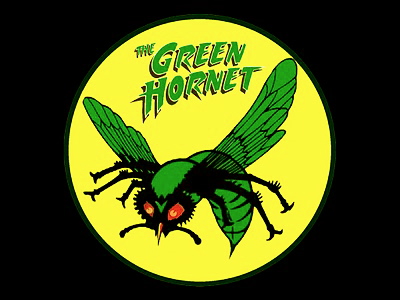 |
The Green Hornet - from Radio &
Comics to the Silver Screen and then Television
The Green Hornet first appeared in the 1930s in a radio program. The
program was dead serious.
The Hornet was originated by the same persons who together created The
Lone Ranger three years earlier.
The crime fighter's prime means of locomotion was a powerful sedan
called the Black Beauty.
The radio show lasted until 1952 - eventually being syndicated. |
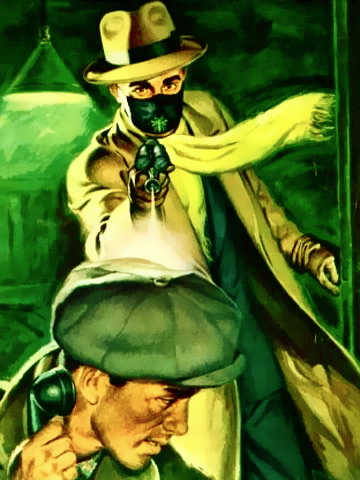 |
Kato
The Green Hornet was helped by his trusted Oriental
butler and bodyguard, Kato. In the original storyline, Kato was a
Filipino of Japanese descent, but as the 1930's brought conflict with
Japan, his character was altered and said to be Korean. This was
especially critical when two movie serials were released in 1940/41 as
America was weighing entry into World War II. In the 1960s television
show Kato was obviously Chinese in character.
The next step for the Hornet, from radio, was his own comic book. Six
issues of "The Green Hornet" appeared starting in December 1940. After
those another company took over the title, with the run ending in 1949.
Since then, the Hornet has appeared a number of times in various comic
incarnations, but rarely for anything more than a one-shot or short
mini-series deal, such as the three Gold Key "Green Hornet" comics with
photo covers featuring Van Williams (Green Hornet) and Bruce Lee (Kato),
published in 1967. |
|
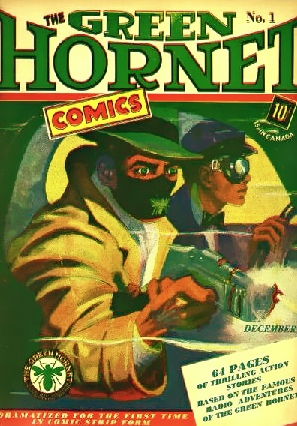
Green Hornet Comic #1 - 1940 |
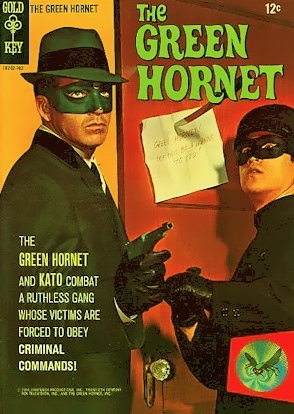
Green Hornet Comic #1 - 1967 |
| During World War II and beyond, going to the movies was a weekly
ritual. Before the feature film, the audience would see newsreel footage
and the ever-present serial. The serial was always a seven to twelve
minute action drama that ended in a cliffhanger with someone in dire
peril. This genre hooked the viewers back again the following week to
find out what happens, something like the television soap opera
philosophy. The Green Hornet was well suited for this episodic role and
was the subject of two different serials in 1940 and 1941. |
|
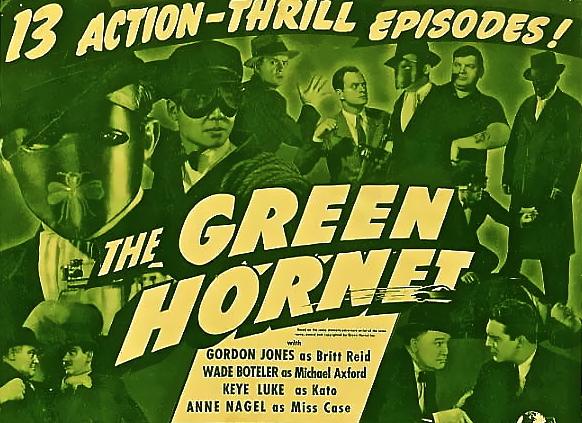
Green Hornet Serial - 1940 |
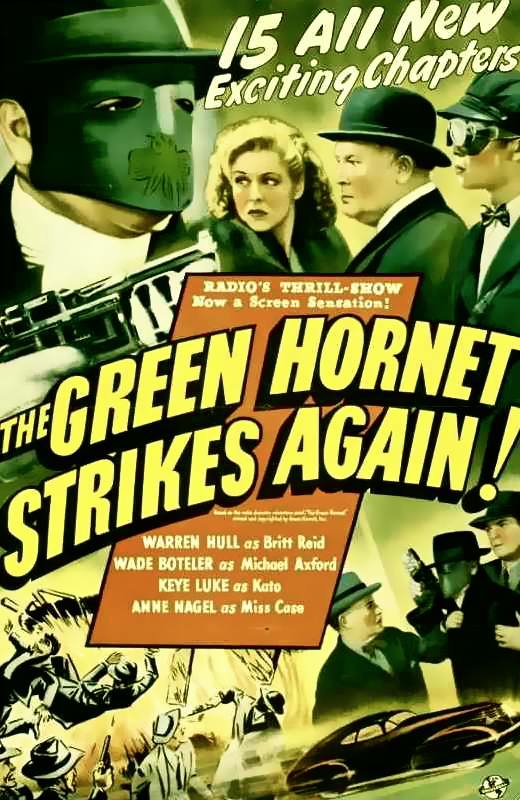
Green Hornet Serial - 1941
|
|
The Green Hornet returns to Silver
Screen after 70 years |
|
The new
"Green Hornet" movie (2011) sadly breaks with tradition and is a
comedic version.
"The Green Hornet is an almost unendurable demonstration
of a movie with nothing to be about."
Roger Ebert - January 2011 |
|
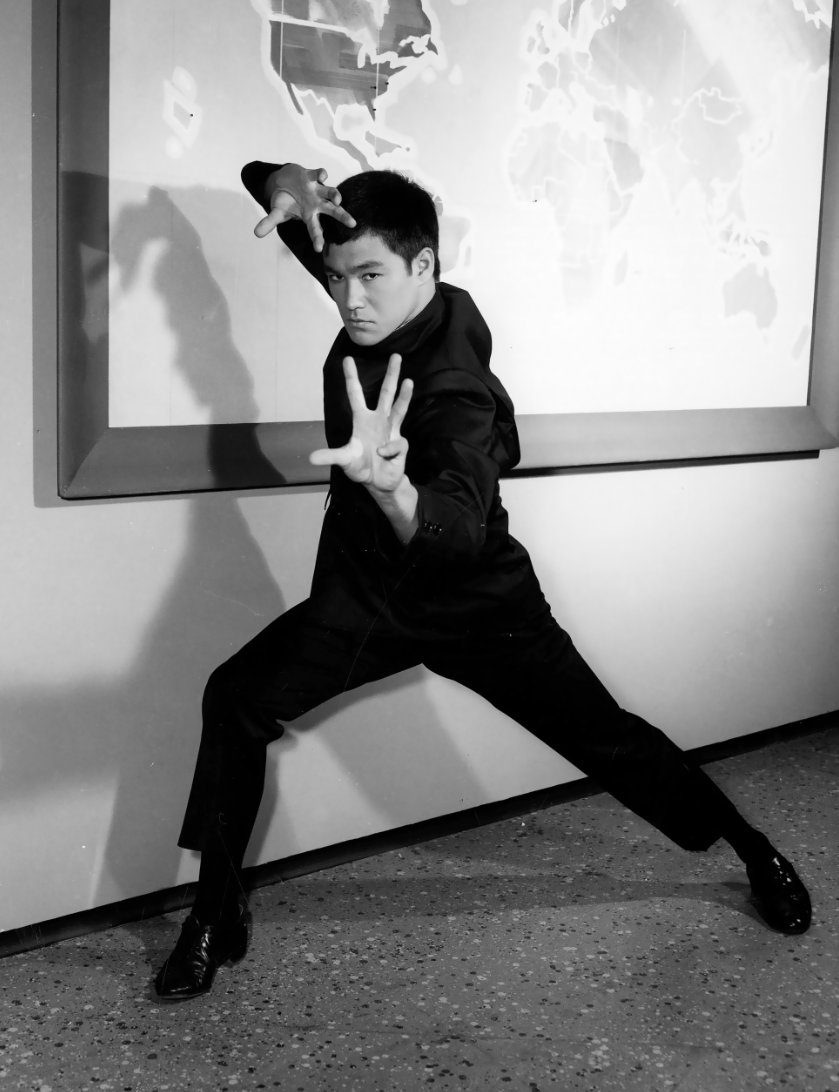
Bruce Lee - Kato (Green Hornet) |
|
Disclaimer: Views expressed are not
necessarily those of the Green Dragon Society or it's membership |
|
The Ninja's Secret Garden and Bruce
Lee's Death |
|
By Dr. R. Brodhi
The author is a pharmacological expert in organic molecular biology,
involved in drug research and development within the pharmaceutical
industry. An associate member of the Green Dragon Society since the
1970's he prefers to remain anonymous for reasons related to his work. |
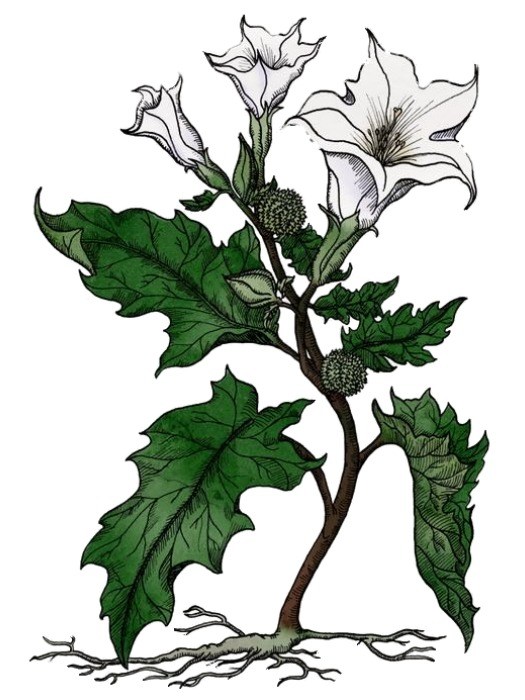
Datura Stromonium |
Among the grandfathers in this garden of demise
honorably overseeing its subjects, reign the monarch family of disguised
death. This plant family has been known by many names throughout the
world. Dhattura, as man first recorded it in the Sanskrit, Devil's
Apple (weed or trumpet), Locoweed, Jimson Weed or as it is scientifically
named - Datura Stramonium. Its brothers are Deadly Nightshade (Atropa
Belladonna), Satan's Apple (Mandrake), and Henbane (Hyoscyamys Niger).
The oracles of Delphi inhaled Datura smoke, risking death, for the
promise of prophecies. Witches of the middle ages rubbed the three
brothers into their skin to achieve sexual frenzy required for the Black
Sabbath. Claudius the Roman Emperor and Hamlet's father are notable
victims. Was Bruce Lee another?
Some speculate that his unexplained death may have been an
assassination. His independent ways may have offended an honorable
Master that perhaps delivered the Death Touch several days earlier.
Perhaps a Ninja delivered a gift to him from the garden. Accidental or
not, the mark of the Grandfather is clear.
According to published accounts, Bruce Lee sought the aid of the best
Western medical specialist available to cure the severe headaches he had
recently been suffering from. The physician after examination could find
nothing wrong and proclaimed him to be in excellent physical condition.
His reputation for keeping his body in top shape was widely known; he
used no harmful chemicals except for his recent experiences with
Hashish.
Shortly thereafter, Lee again experienced severe head pains and was
given a tablet of "Equagesic", a mild and relatively safe prescription
pain reliever, which was used by his friend for her own occasional
headaches. She awoke to find Bruce Lee thrashing convulsively on the
floor, where he soon died despite efforts by medical personnel to save
him. The autopsy reported only a non lethal concentration of "Equagesic"
in his blood. "Equagesic" is a combination of ethoheptazine and aspirin. |
| Datura is found commonly growing in wastelands through most parts of
the world. It is an annual herb that grows to six feet in height with
strong scented, unevenly toothed leaves on green or purple stems, which
produce large white or purple trumpet shaped flowers. It is called a
weed by some, for others it is known as death . . . |
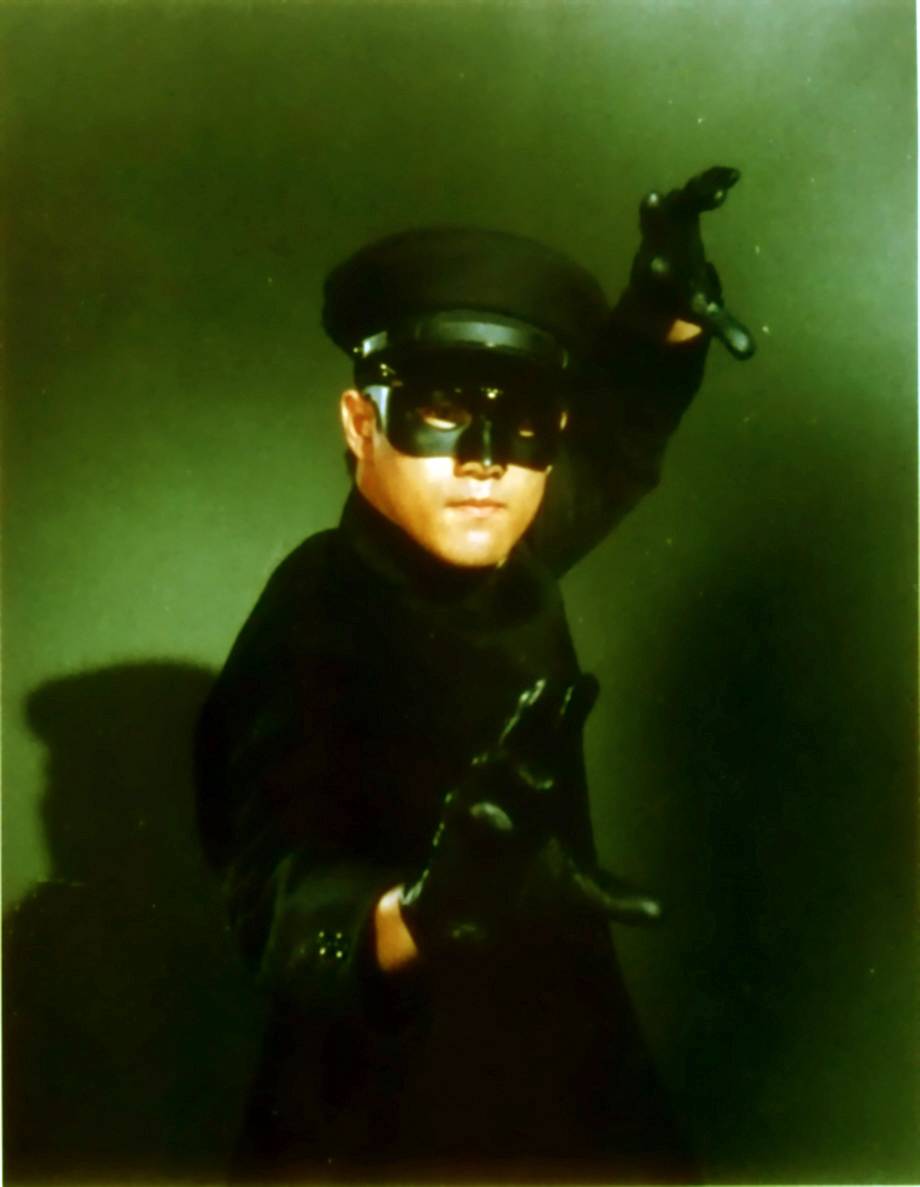
Bruce Lee as Kato . . . in "The Green Hornet" |
The Pharmacological active principles responsible for its lethal
potency are the tropane alkaloid chemicals called atropine, scopolamine
and 1-hyoscyamine. These chemicals cause the body to automatically
respond to a state similar to the experience of being frightened,
preparing to fight or flee. This exaggerated response of the body is
directly related in intensity to the dose of the drug taken. It causes a
proportional increase in heart rate, blood pressure and shunting of
blood from the important internal organs to the muscles instead. These
alkaloid type drugs are similar to cocaine (an anesthetic and central
nervous stimulant), which may be responsible for the severe psychosis and
convulsive death typical of Datura poisoning.
Datura has been intimately associated with Eastern practitioners before
the time of Buddha. It has the reputation as an aphrodisiac in secretly
known small doses, as something that a man may voluntarily seek to
ingest to perhaps impress a mistress? Or perhaps something a mistress
may secretly give a lover to insure virility when pressures from the
outside world of business takes its toll on sexual performance?
It was then, in the 1970's, common practice to cut poor quality
Marijuana or Hashish with the readily available and toxic Datura seeds
to increase its potency and thus sell for a higher price. But could
inhaling a moderate amount of even pure Datura smoke justify anything
more than a severe headache? There is really no clear scientific
evidence that any ingredient in Hashish would combine with any other
drug to cause a lethal overdose. |
|
But what about the ingested tablet of "Equagesic"? If only a part of
an ingested or inhaled drug like Datura circulates free in the blood to
exert its effect, the other fraction is in an inactive state in the body
bound to plasma proteins in the blood. Inactively bound drugs can
however be displaced from its inactive, bound state, to its active
freely circulating state, when another drug is ingested that has a
greater attraction for the limited plasma binding sites in the blood.
Aspirin, a component of "Equagesic", is widely known for its ability to
displace many drugs from their binding sites, thus causing unexpected
and sometimes lethal reactions due to the increased amount of drug that
is now activated in its freely circulating state in the body.
Only commonly suspected drugs are specifically tested for in routine
autopsies. No one expected Datura! |
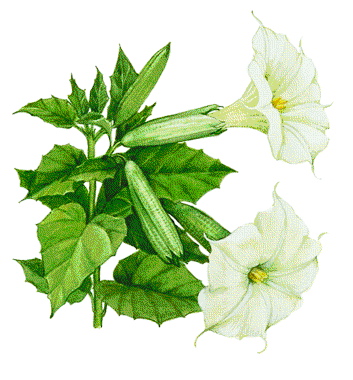 |
|
Chuck Norris Explains What Really
Killed Bruce Lee |
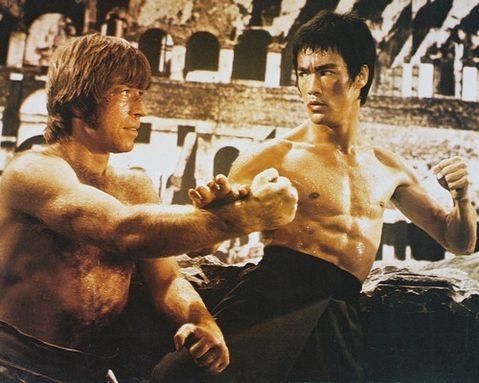 |
Chuck Norris gave a martial arts
demonstration at the 1975 San Diego Comic-Con convention.
Before the exhibition, he spoke briefly about his late-friend, Bruce
Lee.
He explained how Bruce Lee injured his back and what really caused his
death in 1973.
It's a rare recording and very informational and interesting.
Video |
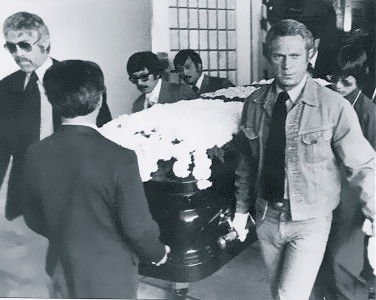 |
|
